Yellowstone Future Forecast Update

Back in April I wrote about the future of Yellowstone, and due to the global semiconductor shortage, the future was not looking bright. The Lattice FPGA at the heart of Yellowstone was out of stock everywhere, with an estimated factory lead time on new chips of an incredible 67 weeks. I predicted that BMOW would exhaust the existing stock of Yellowstone hardware sometime in August or September, and that would be the end.
Since then I’ve been watching Lattice’s estimated lead times, hoping that maybe they’d drop to something half-way normal, but unfortunately it’s gotten even worse. It’s been 19 weeks since that April update, so theoretically the 67 week lead time should now be down to 48 weeks. But as of today the lead time on that chip has actually increased to 79 weeks! Ugh.
The best case is a different Lattice FPGA package variant that currently lists a 53 week lead time, but I no longer trust these numbers at all. I strongly suspect that Lattice’s numbers for this chip family are somewhere between wild-ass guesses and complete fiction. They have no idea when or even if they’ll ever have these chips available again. They’re clearly having major difficulty sorting out their manufacturing capacity and meeting all the demand, so an older inexpensive chip that earns little profit for Lattice is probably at the bottom of their priority list. After two years of unavailability and a prediction of at least one year more, I wouldn’t be surprised if this chip were never available again. They’ll continue to push back the estimated lead times for another year or so, before finally admitting reality and giving the chip End of Life status.
This is all just a long-winded way of saying that the future availability of Yellowstone looks even more doubtful now than it did back in April. The only bright spot (for buyers, not for me) is that sales have been slower than expected, so I expect the existing stock will last longer than my original estimate of August-September. At the present rate, the current stock should last until sometime in the spring of 2023. We’ll keep our fingers crossed that Lattice will have sorted out its manufacturing problems by then.
I’m disappointed of course, but that’s life in this industry. There’s no guarantee that parts will continue to be available forever. Usually you get more of a grace period, and a part is eventually designated Not For New Designs, and finally you get a “last-time buy” notification to stock up before the chip is gone for good. The only answer is to factor the likely future availability of parts into your designs, and be prepared to redesign the product around new parts when existing parts reach end-of-life. That would be theoretically possible here, but it would be a big task and I’m not sure I have the appetite for it. Stay tuned for 2023 and beyond.
Read 4 comments and join the conversationRon Nicholson, Early Mac and Amiga Engineer
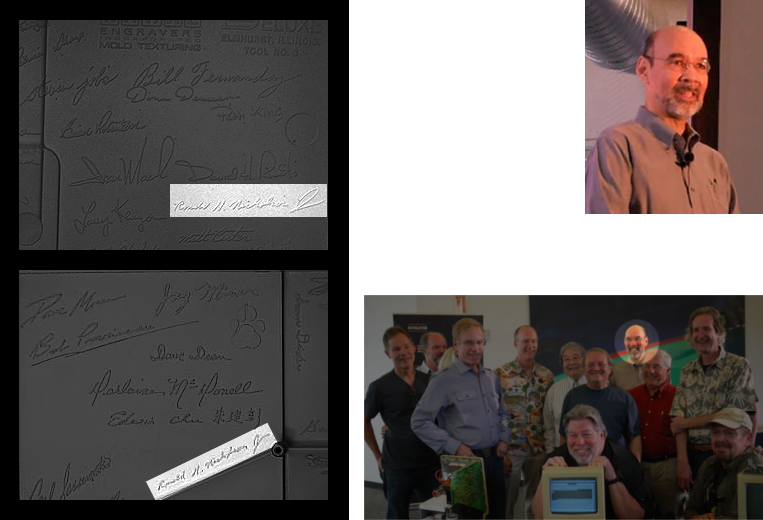
Tonight I’ll be attending a presentation from Ron Nicholson, who was both a member of the original Macintosh engineering team (1980-1982) and founder and Director of Engineering of Amiga (1983-1984). I believe he’s the only person whose signature is molded into the case of the early Macintosh and the original Amiga computers. Post your questions for Ron here, and I’ll try to get answers, or see if I can entice him to come here and answer them himself.
Among his many accomplishments, at Apple Ron was an IWM ASIC project engineer and Apple II peripheral engineer, including work on the Super Serial Card. He also worked on the CMOS clock chip for the original Macintosh. Ron has worked at several Silicon Valley companies, including Apple, Amiga, HP, Sigma Designs, and Silicon Graphics. Ron has contributed to the design of FPGAs, network ASICs, RISC workstations, the Nintendo 64, the original Apple Macintosh, and the Commodore Amiga. Ron is named as co-inventor on 11 U.S. patents, including several on the architecture of the Amiga 1000. http://www.nicholson.com/rhn/index.html
Read 3 comments and join the conversationApple IIc Drive Switcher and ADB-USB Wombat: Back in Stock
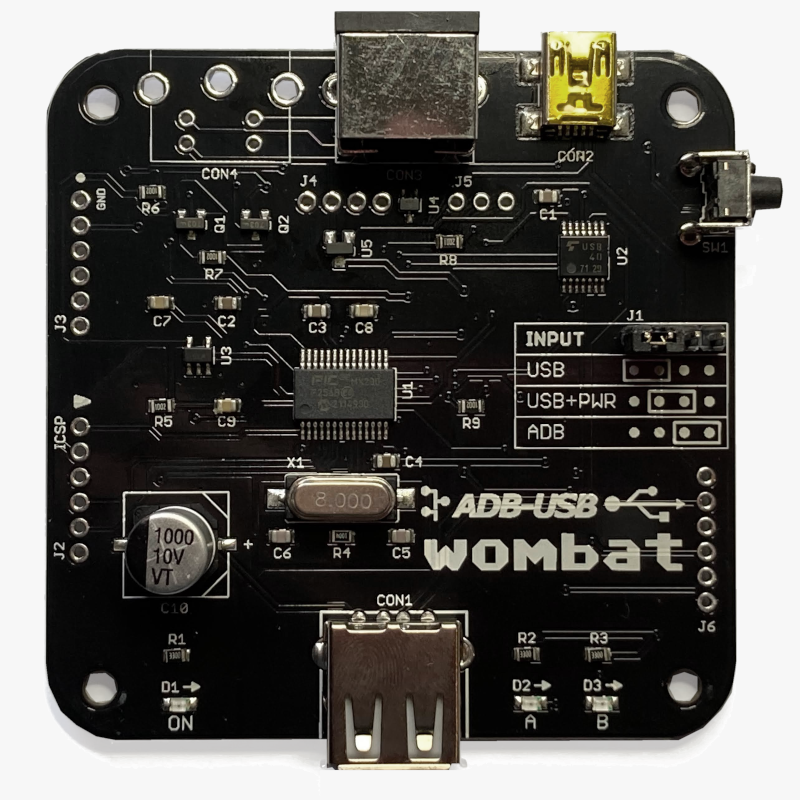
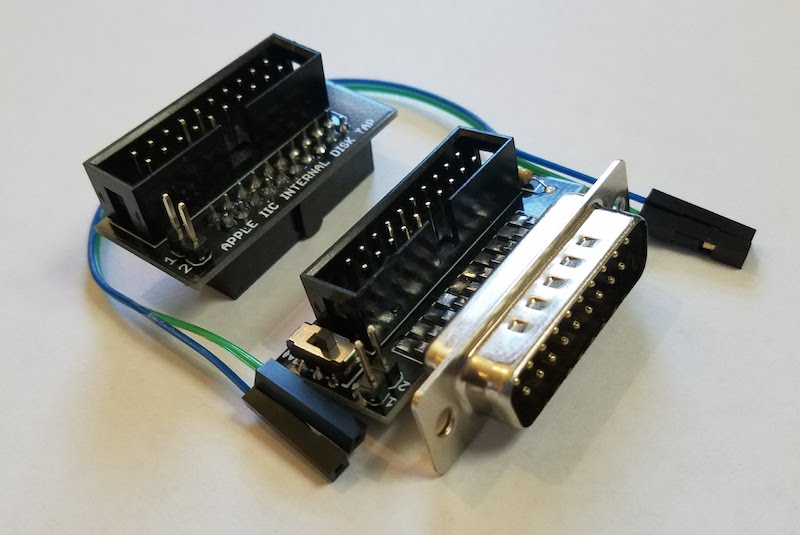
BMOW’s Internal/External Drive Switcher for Apple IIc is back in stock! Select which 5.25 inch floppy drive should act as bootable Drive 1: the external Floppy Emu disk emulator or the IIc’s internal floppy drive. The Switcher also adds IIc support for Floppy Emu’s new dual external 5.25 inch floppy drive emulation feature.
The Wombat keyboard/mouse converter is also back in stock. Connect modern USB keyboards and mice to a classic ADB-based Macintosh, Apple IIgs, or NeXT. Or connect legacy ADB input hardware to a USB-based computer running Windows, OSX, or Linux.
Both products were delayed by parts availability problems, shipping problems, and COVID lockdowns in China. It’s a difficult time for small-scale manufacturing! Grab your hardware today before these are gone again.
Be the first to comment!Exploring Antenna Gain Directionality
For the past week BMOW has been busy experimenting with HF radio communication on the 40m and 20m bands, 7 and 14 MHz. With the right radio, antenna, and weather conditions, these frequencies can support direct communication with someone halfway around the world. I haven’t managed to do that yet, but I’m having fun experimenting with what’s possible. I’ve discovered that the antenna matters far more than the radio: its design, size, height, and physical location. Most antennas will provide more gain in some directions than in others, which can be useful and frustrating in equal parts.
My experience so far: With a 20 watt Xiegu G90 radio and a home-made end-fed halfwave antenna, I’m able to make single-sideband voice contacts to a distance of 1000 miles, maybe more. But there’s a peculiar directionality to the contacts. On the 40m band, most of the people I can hear are within a few hundred miles of my San Francisco location. On the 20m band, I don’t hear very many local people, but I hear strong clear signals from Seattle, Vancouver, Calgary, Idaho, and western Montana. I also hear people in Arizona and Texas, but not as clearly. Occasionally I can hear people from Europe, Russia, New Zealand, and Australia. But I hear virtually nothing from Utah, Colorado, the midwest, or eastern USA. This map shows the approximate effect. I’ll talk more about where this came from in a minute.
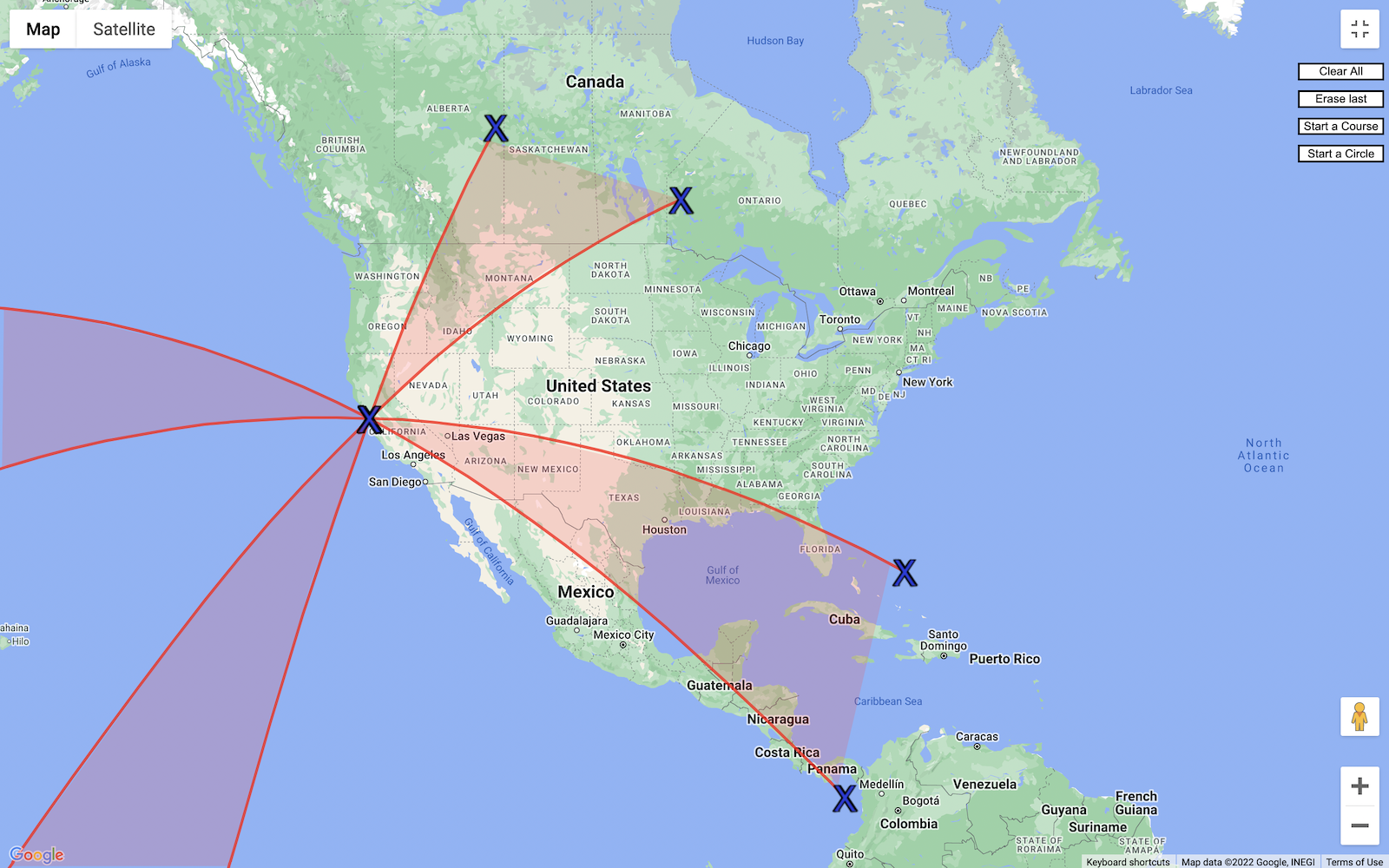
Radiation Lobes and Gain
The EFHW antenna wire is about 10m off the ground (the highest trees in my yard), and 20m long, so it’s a half wavelength when operating on the 40m band. That makes it a classic halfwave antenna, with a figure-eight radiation pattern showing two main lobes extending perpendicular to the wire:
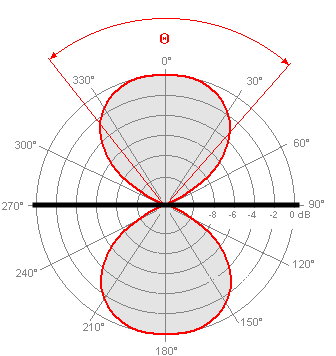
This shows a top-down view of the radiation pattern for a wire oriented east-west. The antenna has gain to the north and south. This gain isn’t like a powered amplifier’s gain, since the antenna is a passive device. The “gain” means that relative to a reference antenna, this antenna radiates better in particular directions, and is also more sensitive to signals coming from those directions. In this case, the antenna would be great for communicating with someone to the north or south, but terrible for someone directly east or west.
40m Operation
My EFHW antenna is oriented roughly north-south, on a bearing of 339 degrees from true north. So I should be seeing nice gain to the west (ocean) and east (most of the USA) right? Not so fast. That figure-eight shows the horizontal radiation pattern, but what about the vertical pattern? It turns out that the height of the antenna is very important, because the radiation pattern interacts with the ground. The rule of thumb is the wire should be at least a half wavelength above the ground, in order for the signal to radiate towards the horizon, where it’s useful.
If the wire is much lower than this, a large amount of the signal will radiate upwards, where it will either reflect straight back down again or else pass into space, neither of which are helpful. Here’s a side view showing the vertical radiation pattern at increasing wire heights:
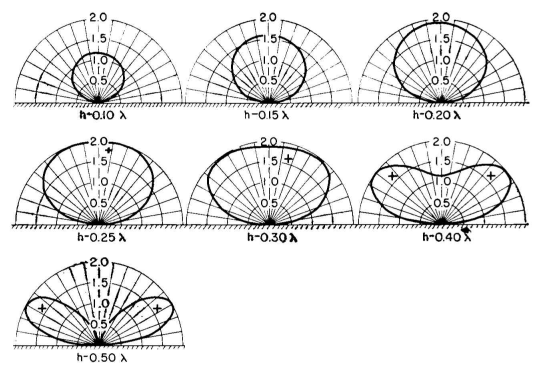
When operating on the 40m band, my 10m antenna height is too low. Most of the signal radiates up at a steep angle, then comes back down nearby. This explains why most of the people I can hear on 40m are within a few hundred miles.
20m Operation
The EFHW also resonates on harmonics of 40m, including 20m. When operating on the 20m band, my 10m antenna height is just right, so I should see nice gain to the east on the 20m band? Nope. It turns out that the classic figure-eight radiation pattern only applies when the wire’s length is a half wavelength. On the 20m band, the wire is a full wavelength. That creates a four-lobed radiation pattern, where each lobe is centered +/- 54 degrees from the wire:
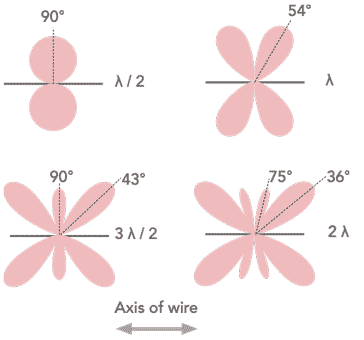
That’s not what I originally expected, but it’s not all bad. By focusing my meager 20 watts in specific directions, my signal will virtually disappear in some directions but be comparatively strong in others. An omnidirectional 20 watt signal might be mediocre in all directions.
Applying those +/- 54 degree lobes to the 339 degree wire orientation, there should be four lobes centered at 33, 105, 213, and 285 degrees bearing from San Francisco. The map at the top shows these four lobes, estimating they’re each about 25 degrees wide. Notice that it misses most of the United States. Oops. The lines are slightly curved due to the map projection. On a globe, they appear straight.
There’s a person in Missoula Montana who I’ve communicated with a few times, and his location is smack in the middle of my northeast lobe. He’s running 700 watts compared to my 20 watts, and he’s amazed by the clarity of my signal. If we extend that northeast lobe, it passes over Canada on a polar route and lands directly on the UK and Europe.
That southeast lobe hasn’t been as useful as I would expect. I hear some people in Arizona and Texas, but it’s not as clear as the northeast lobe. I’ve never heard anything from Florida, even though Miami should be in the lobe.
The northwest lobe isn’t very useful. It covers 7000 miles of ocean before reaching Indonesia, then crosses beyond into the Indian Ocean and Antarctica. If you’re wondering how a northwest lobe could be aimed at Indonesia, which is south of the equator, look at a globe. This confused me for a while too.
The southeast lobe is mostly ocean too, but it does encompass New Zealand at its edge. I’ve heard radio operators from New Zealand a few times, but haven’t yet managed to make contact with one.
This azimuth projection map presents the same information, but may be easier to understand:
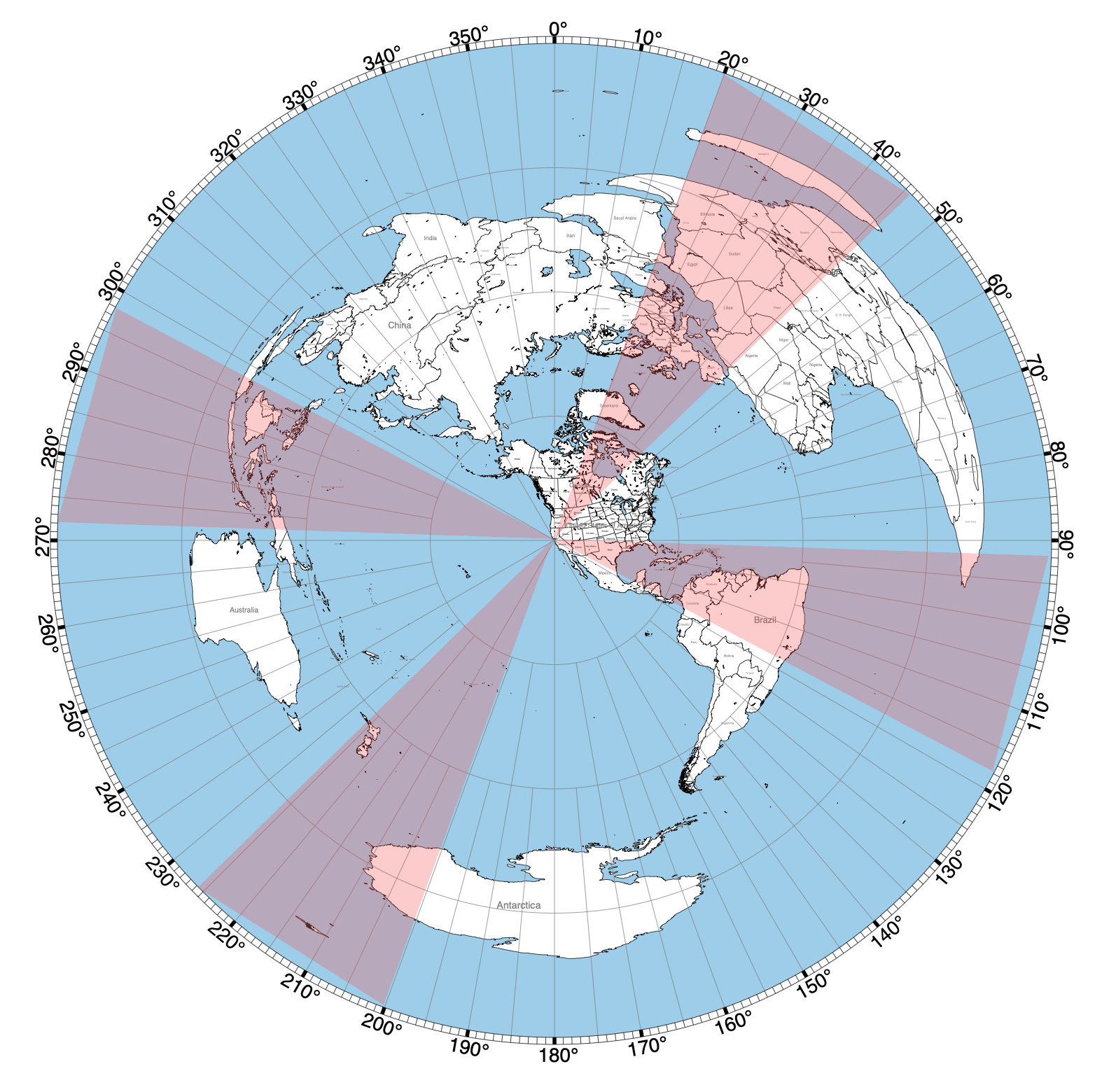
Hello, Vancouver
There’s one effect I haven’t been able to explain: 20m signals from the Pacific Northwest work better than almost any other location. My very first HF radio contact was near Vancouver: exciting! International radio communication! But when more and more contacts continued to appear in British Columbia and Washington state, this PNW focus became a mystery. Shower thought: do Canadians call Vancouver the “Pacific Southwest”?
If my map is halfway accurate, Vancouver should be close to a null in my 20m antenna radiation pattern. Either my map is wrong, or there’s some other effect providing north-south signal propagation. Proximity to the ocean? Something about similar ionospheric conditions at the same longitude? I don’t know.
Call Me?
If you’re an amateur radio operator living in one of these four 20m lobes, or in Washington state or western Canada, send me a note. I’d love to schedule a time to get on the radio and make contact. We can chat about radio stuff, or vintage computer stuff, and exchange some ideas. Talk to you soon.
Read 3 comments and join the conversationLearn Morse Code for Fun and Profit
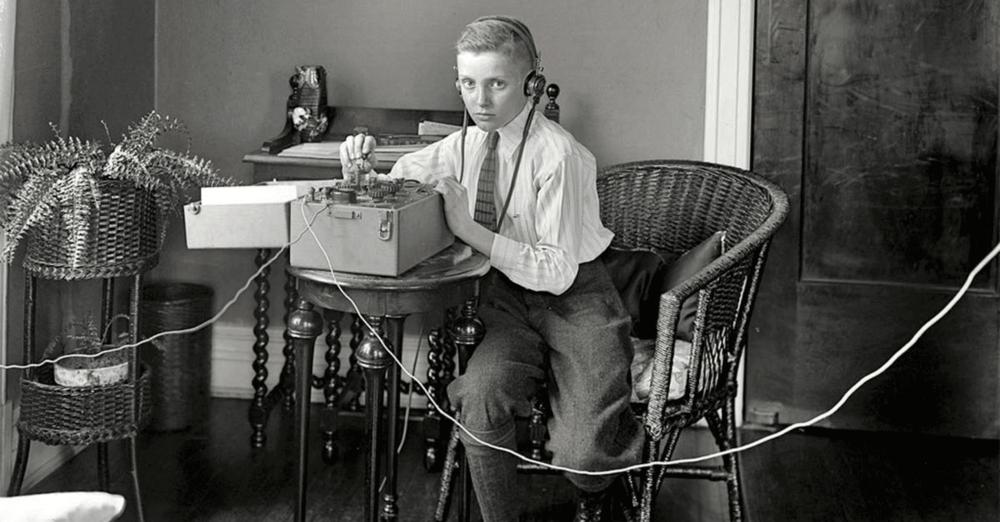
Today is Morse Code Day! You might be surprised to learn that CW (the modern term for Morse) is still widely used in certain corners of the amateur radio universe, not for nostalgia reasons, but because it’s still the best solution to a particular problem. If you want a human-mediated communication method with low transmitter power requirements, good for portable use, and with a very narrow bandwidth (to avoid overlap or interference with other signals), then Morse is your answer. There are plenty of companies making new CW transceivers, like this Mountain Topper series. Maybe their slogan should be “Morse: not dead yet.”
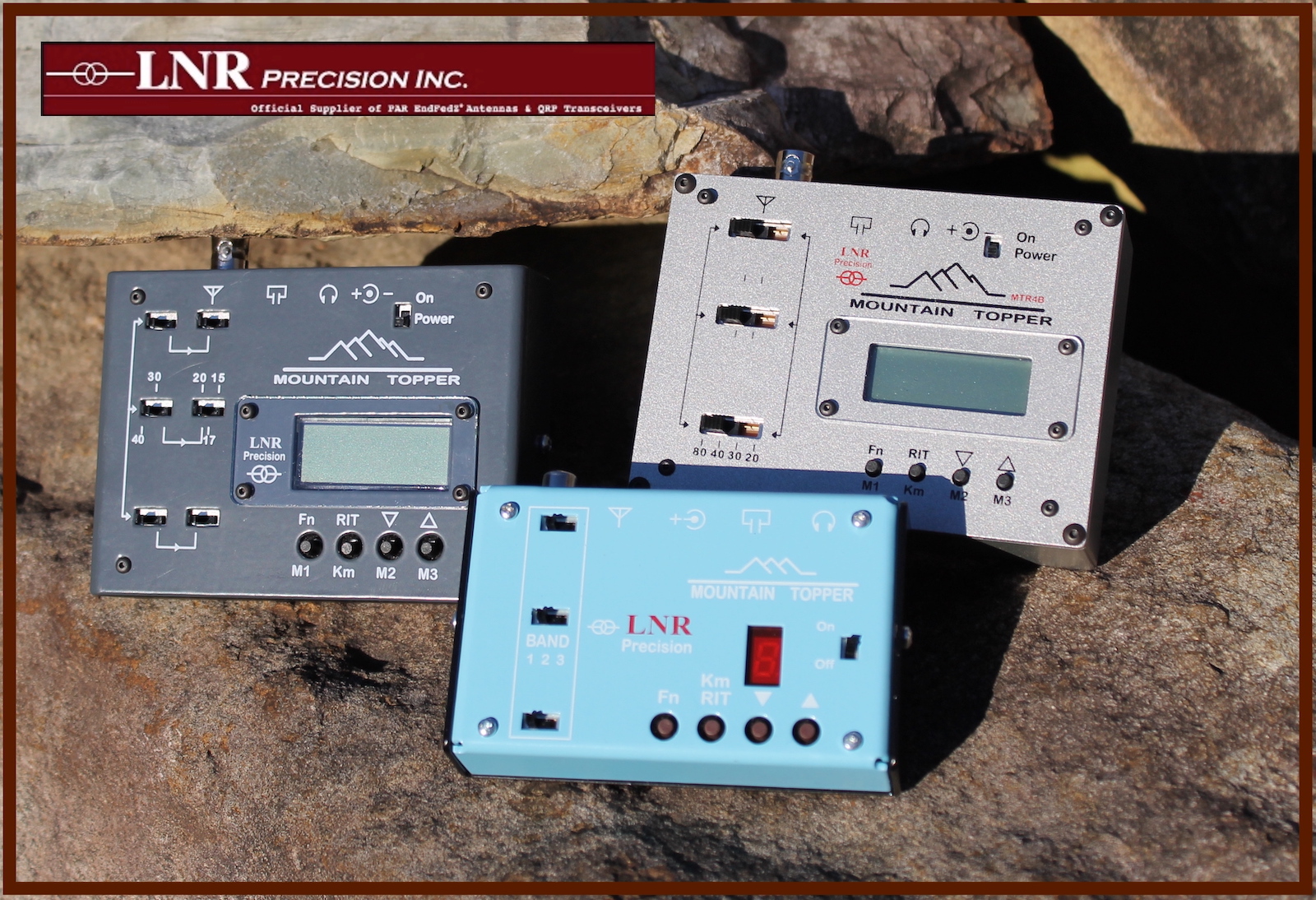
For the past several weeks I’ve been hard at work attempting to learn Morse, spending time each day with trainer software to practice decoding and sending. It’s hard. It doesn’t take too long to learn the dash-dot patterns of the 40-something letters, numbers, and symbols, but it’s hard to be fluent enough to mentally decode them quickly and without conscious thought. Unlike reading a book in a foreign language, you can’t stop and go back over a section where you had trouble. If you ever need to pause and think “what does dash-dot-dash-dash mean again?” then you’re dead. You just need to practice and practice until dash-dot-dash-dash innately sounds like Y in your head, just as much as a spoken word does.
A few decades ago, most people learned Morse by starting at a slow speed about 5 words per minute, which was once the speed requirement for a Novice radio operator’s license in the United States. But at that speed, you can consciously count the dashes and dots, and you naturally construct a lookup table inside your head. You think 1-1-2, oh that’s a Y. But this turns out to be a handicap when you attempt to go faster, and conscious access to a mental lookup table simply can’t go fast enough. The most recommended learning method today is to start learning letters at 18 to 20 wpm, where you can’t easily count the individual dashes and dots anymore, but you learn to recognize the rhythm of each letter, like a snippet of music. But to avoid becoming overwhelmed, extra space is inserted between each letter so the overall average rate is still 10 wpm or less.
Experienced CW operators tell me that learning to send Morse is actually easier than learning to receive and decode it. I’ve been practicing receiving for several weeks, but only just started sending practice a few days ago.
The technology used for sending Morse has changed over the decades. In old movies you see people making tap-tap-tap gestures on a single lever, that’s called a straight key. These aren’t used much anymore, but they’re easy to understand. As long as the key is held down, the radio emits a tone, and the operator has full control over the speed and relative duration of dashes and dots and the gaps between them. This allowed operators to develop a distinctive keying style called a “fist”, which others could use to recognize them even if they weren’t explicitly identified. For example, an operator might have a habit of slightly rushing the last dot in R, or using a particular uneven spacing between the elements of C.
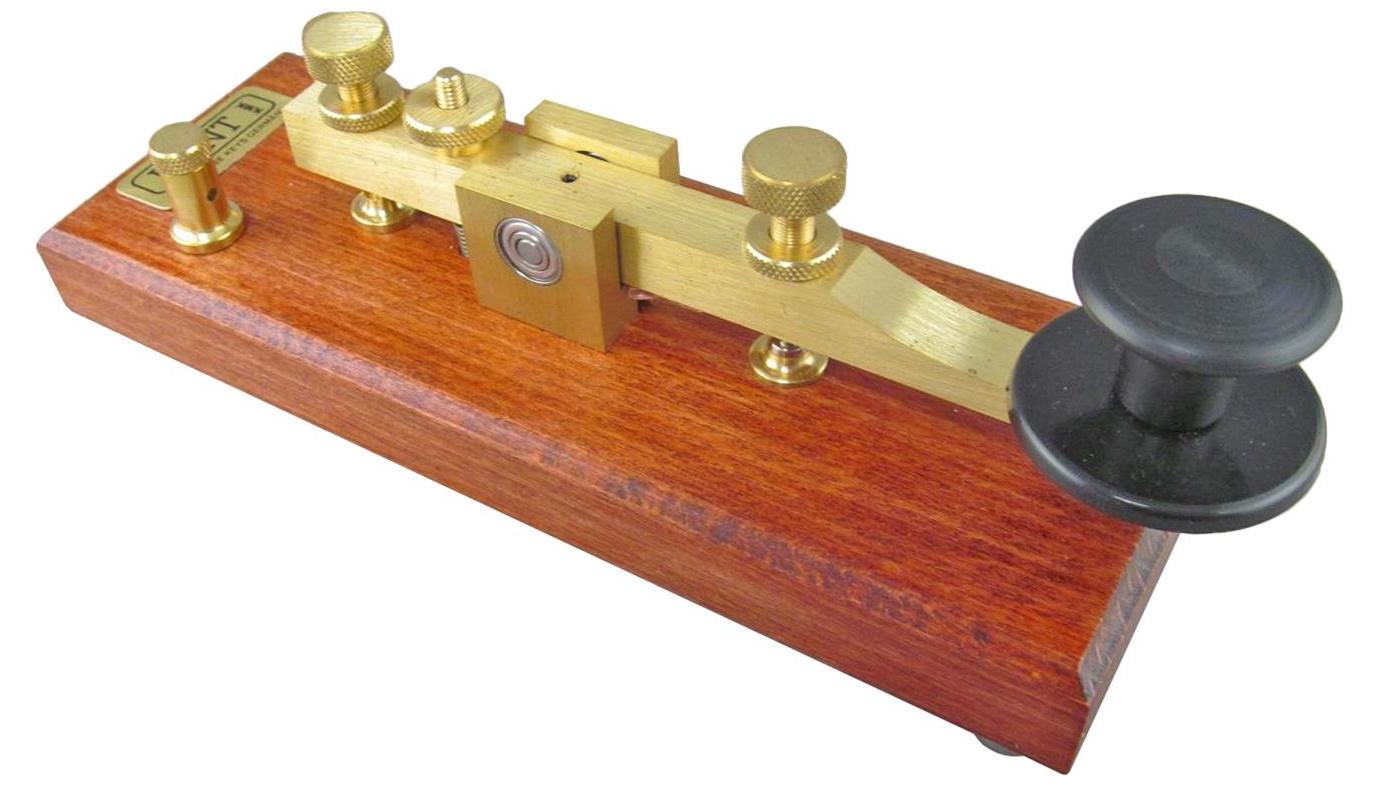
Today most CW operators use a device called a paddle, along with an electronic keyer. The paddle has two levers that are pushed horizontally rather than vertically, one paddle for dashes and one for dots. A circuit in the electronic keyer emits a perfectly-timed series of dashes or dots for as long as the corresponding paddle is pushed. There’s also a simple form of “type ahead”. If you push the dot paddle while a dash is being transmitted, the keyer will emit the dot after the dash is finished, with exactly the right gap between them.
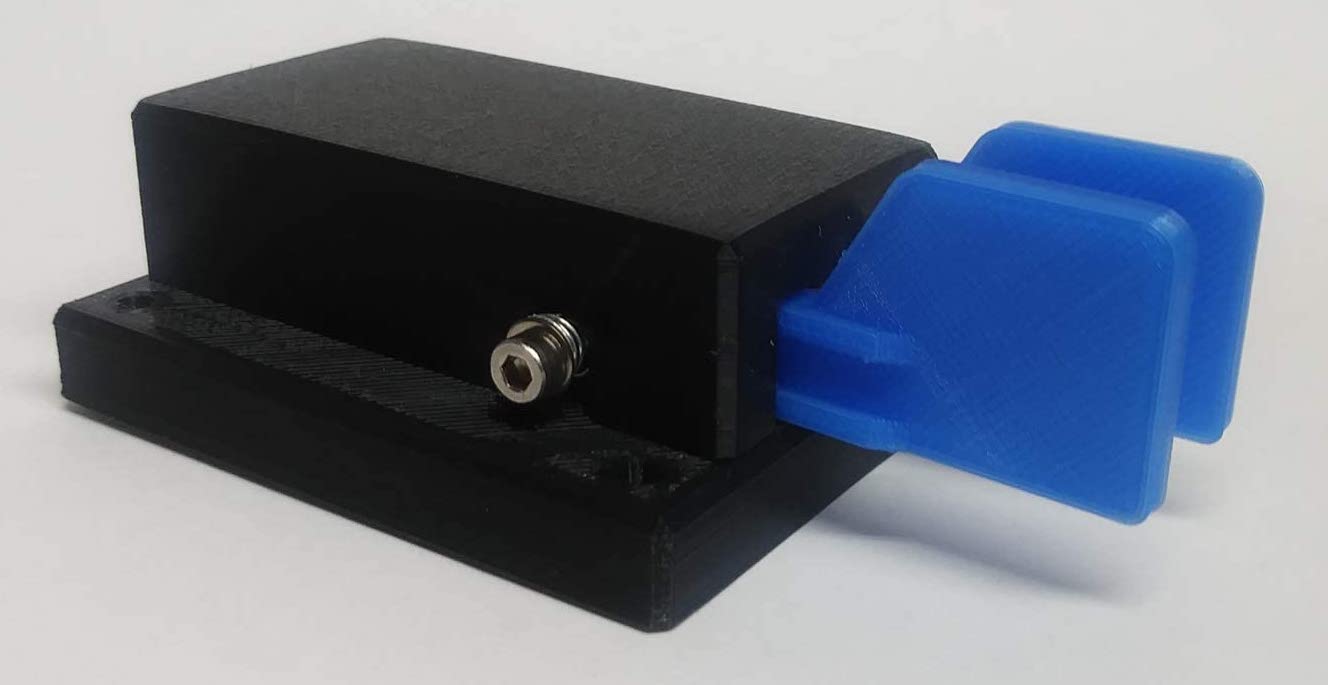
VBand is a fun web-based tool for experimenting with Morse code along with other beginners. You can use keyboard keys as if they were the levers on a paddle, then jump into a chat room and have a horribly fractured conversation with a stranger.
An odd bit of trivia: the original code developed by Samuel Morse in 1838 is not what’s used today. That code was retroactively named American Morse Code, after the rest of the world adopted a different version. American Morse is rather strange, and is now more-or-less extinct. Everybody today uses International Morse Code. Score one for standardization.
Read 4 comments and join the conversationIntentional Unintentional RF for Sneaky CW Transmissions
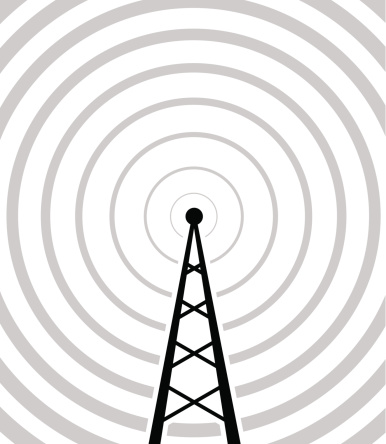
An unintentional radiator is a device that emits radio frequency signals, even though it’s not intended to. Usually this happens as a result of poor circuit design or inadequate shielding, and it’s a problem. For sneaky purposes, an unintentional radiator can also be used intentionally to send a weak radio signal that carries real information, instead of just causing interference. For example, see this DDR SDRAM hack that uses carefully-timed memory accesses to transform memory bus traces on the PCB into a WiFi antenna, transmitting signals from air-gapped computers.
I’ve started wondering if a simpler version of the same idea could be used to send Morse code transmissions on standard ham radio bands. For example, say you have an Arduino with a built-in LED. If you use PWM to toggle the LED on and off at 7.4 MHz, and tune a radio that’s sitting next to the Arduino to 7.4 MHz CW, I think you would hear a steady carrier. By programmatically enabling and disabling the PWM, you could create the dots and dashes of Morse code. It might take a little experimentation to discover which traces on the Arduino PCB radiate best, at what frequencies. But this kind of thing seems to happen often enough by accident, so it maybe wouldn’t be hard to do it on purpose.
A more interesting avenue would skip the Arduino, and work directly on a typical computer. Is there some Javascript code you could write that would abuse the hardware APIs to enable and disable some oscillator on the computer whose frequency is in a standard ham band, that might unintentionally radiate a very weak signal, and that can be programmatically switched on and off to create Morse? For example, you can do USB HID stuff now through Javascript, and a USB cable might make a nice antenna. Or maybe try some carefully-timed sequence of RAM or SSD access. Or somehow abuse the camera API or anything else that would involve switching signals in the tens to hundreds of MHz range.
The end result could be like magic: just visit a web page in your browser, then tune a nearby radio to the right frequency, and hear a Morse code message. It would be like playing music with floppy drives, except at radio frequencies. Is there any existing proof-of-concept for an idea like this?
Read 4 comments and join the conversation
